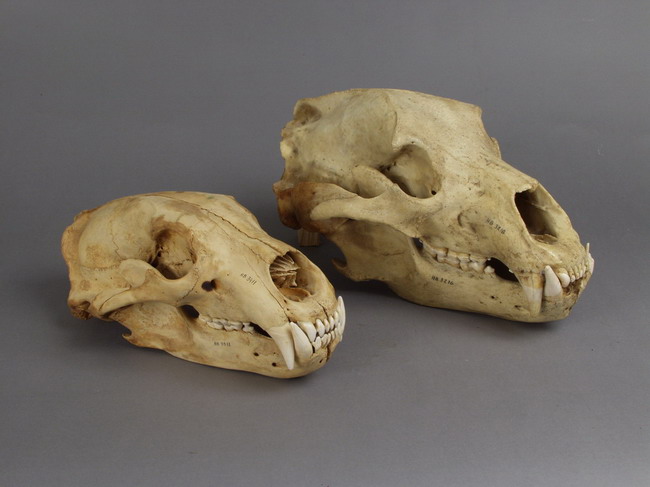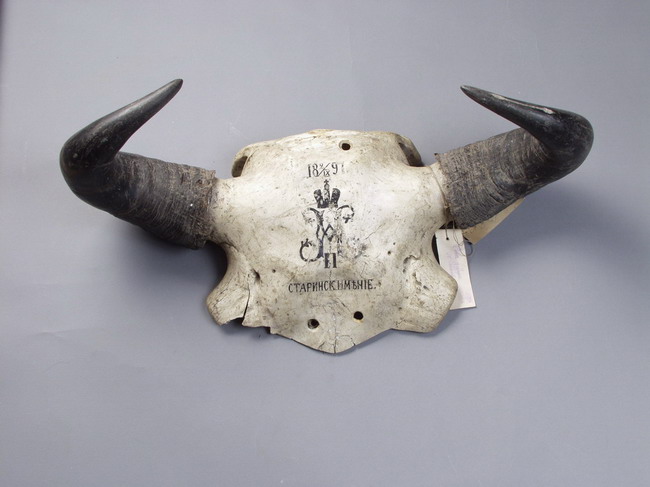Osteology collection
Curator:
Dmitry Miloserdov
The collection holds 2 137 specimens - skeletons and skulls of mammals, as well as
representatives of other classes of vertebrates. Skulls are the most numerous,
representing various mammals of almost all orders. The collection also contains
full skeletons and their fragments, and individual bones.
Some of the remarkable
specimens are the skulls and skeletons of exotic mammals, skulls of
representatives of the pig family, such as Buru babirusa and common warthog, along
with skeletons and skulls of primates, including apes, and full skeletons of
narwhal and manatee. The skulls of the hippo, Indian elephant, dugong, African black
rhinoceros and Indian rhinoceros are worth mentioning.
Of
particular interest is the collection of the
horns of Ungulates (499 specimens, including over 50 specimens with
abnormalities). There are some valuable specimens, such as the horns of African
even-toed ungulates (Artiodactyla), as well as horn materials of European and American
bisons.
Of
historical interest is a series of horns - trophies
of the Russian imperial hunts – European bison, moose, red deer, roe deer,
caught in the early twentieth century in Białowieża Forest by the emperor Nicholas
II of Russia and members of the royal court.
In 1997, Osteology collection was replenished with an extensive selection of tusks of African elephants confiscated by the Sheremetyevo airport customs
and transferred for permanent storage to the Darwin Museum.
Some of the
outstanding specimens are the full
skeletons of hummingbirds, flamingos and some species of the Casuariiformes
order, as well as the skeleton of the dodo from the island of Mauritius.

Skulls of bears. The
skull of the polar bear on the left (Ursus maritimus hipps), of the brown bear on
the right (Ursus arctos L.).

The European Bison horns (Bison bonasus L.). The trophy of the Russian imperial hunt. Obtained by Emperor Nicholas II in Białowieża Forest on September 2, 1897 (according to the Julian Calendar).









